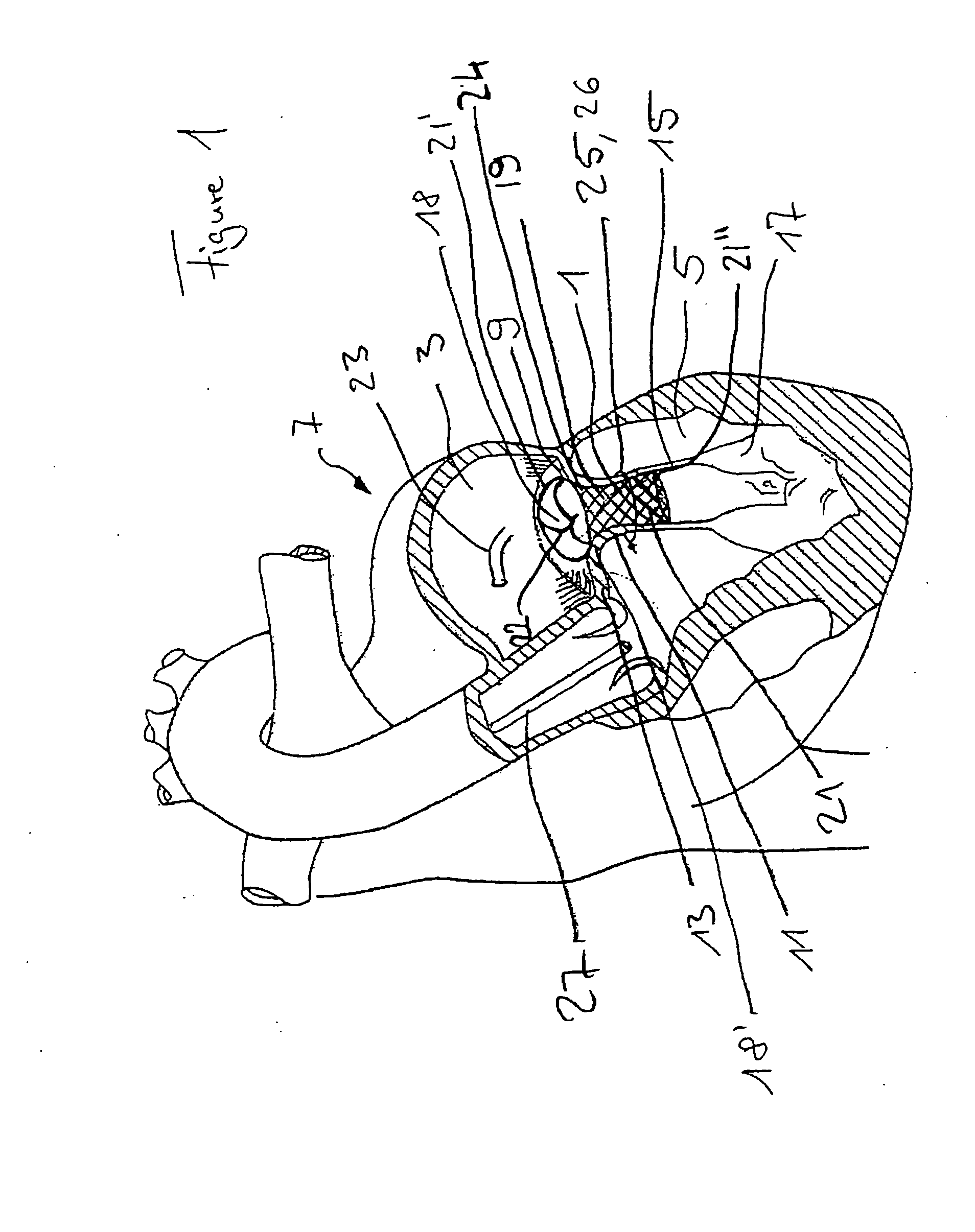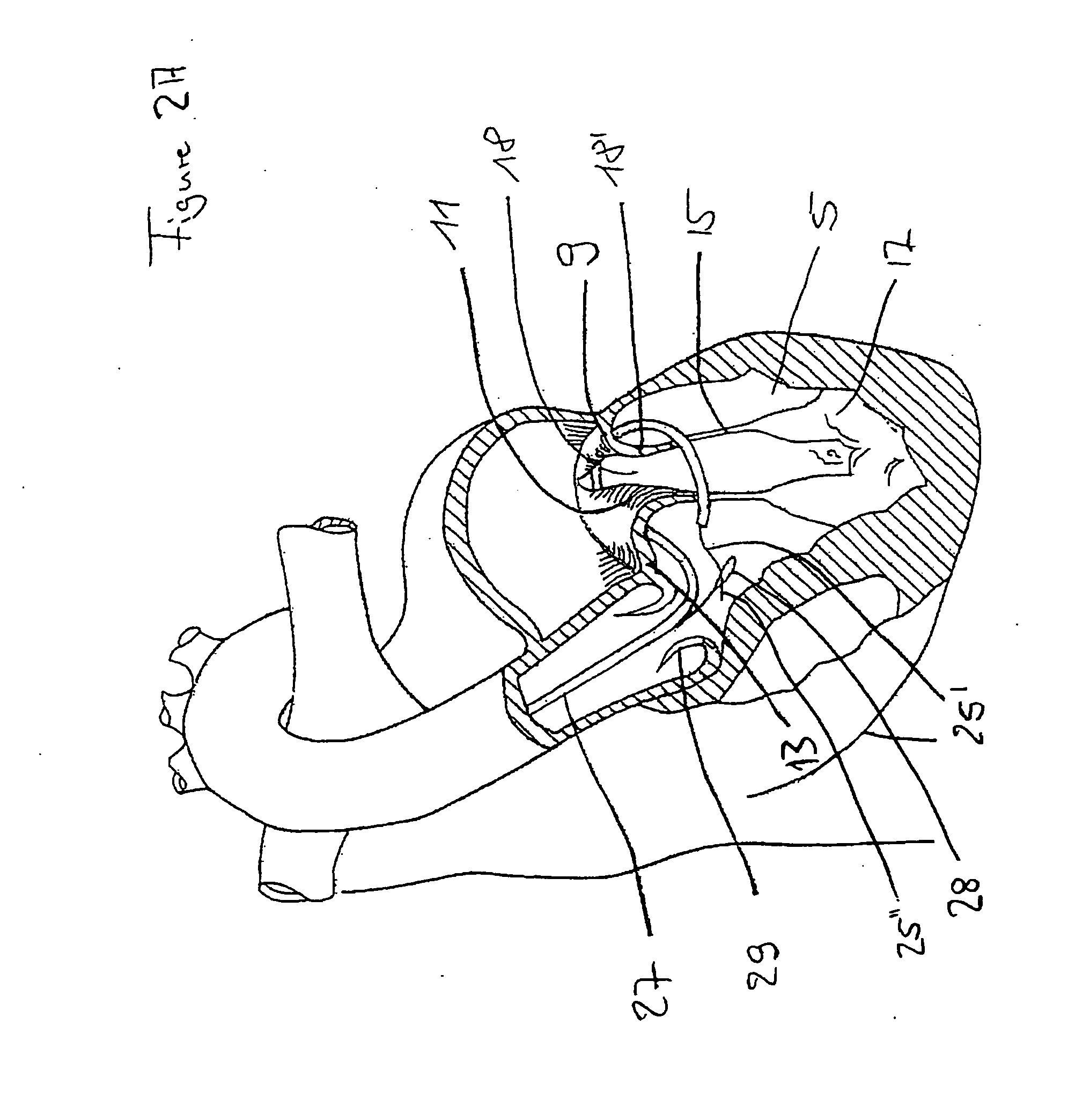Transcatheter atrio-ventricular valve prosthesis
- Summary
- Abstract
- Description
- Claims
- Application Information
AI Technical Summary
Benefits of technology
Problems solved by technology
Method used
Image
Examples
Embodiment Construction
[0045]Implantation of a transcatheter atrio-ventricular valve prosthesis (mitral valve or tricuspid valve prosthesis) on a beating heart can be achieved by a minimally invasive approach in a mammal. This specification describes procedures and apparatuses, including the valve prosthesis itself, to insert and deploy the valve prosthesis and to anchor it by attachment to locations inside the heart.
[0046]According to an embodiment, the invention provides a transcatheter atrio-ventricular valve prosthesis. According to another embodiment, the invention provides a method for implanting a transcatheter atrio-ventricular valve prosthesis. Further embodiments of the invention are described below.
[0047]According to an embodiment of the invention, a transcatheter atrio-ventricular valve prosthesis for functional replacement of an atrio-ventricular valve in a connection channel, having a circumferential connection channel wall structure, between atrial and ventricular chambers of a heart is pro...
PUM
 Login to View More
Login to View More Abstract
Description
Claims
Application Information
 Login to View More
Login to View More - R&D Engineer
- R&D Manager
- IP Professional
- Industry Leading Data Capabilities
- Powerful AI technology
- Patent DNA Extraction
Browse by: Latest US Patents, China's latest patents, Technical Efficacy Thesaurus, Application Domain, Technology Topic, Popular Technical Reports.
© 2024 PatSnap. All rights reserved.Legal|Privacy policy|Modern Slavery Act Transparency Statement|Sitemap|About US| Contact US: help@patsnap.com










